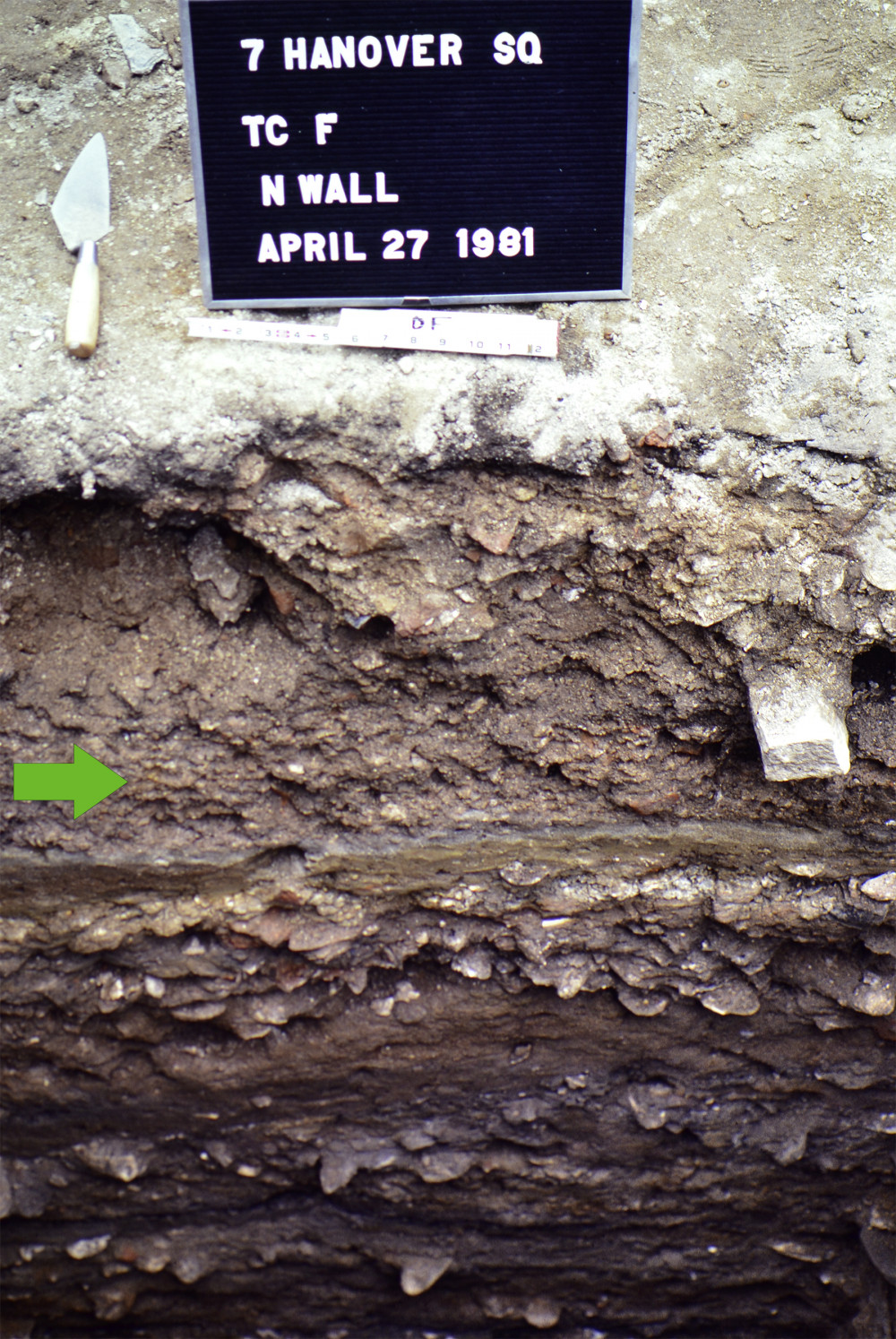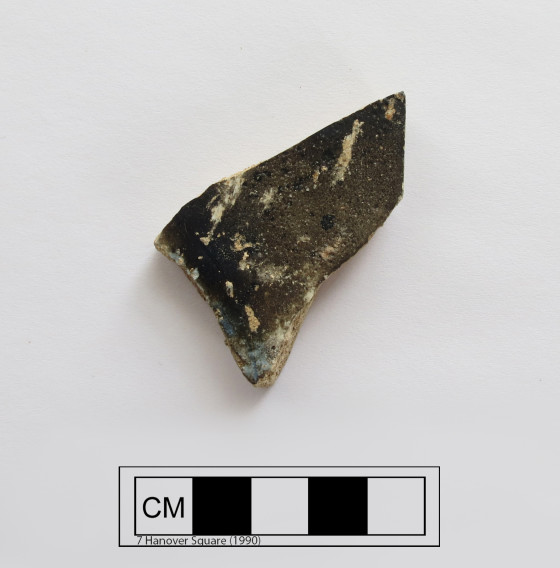This context (Catalog #78: Lot 12, Test Cut F, Stratum 5, Level b) consists of artifacts found in a medium brown silty sand with rubble from a demolished building, likely circa 1760-1780, located in the rear portion of Lot 12. This stratum was located on top of a mustard-colored silt that represented the basement floor of this structure, constructed in the mid-18th century. This deposit may contain debris from the burned Henry Van Vleck house, destroyed in a 1778 fire in lower Manhattan. Debris from this structure was also excavated from the base of the cistern in Test Cut G.
A 1760 New-York Mercury Advertisement claims that Henry Van Vleck, a merchant, moved from his Wall Street residence into a house and storefront on Pearl Street, or Dock Street, as it was known at the time. On August 3, 1778, a fire ravages two blocks of lower Manhatttan, including Henry Van Vleck’s house and most of the 7 Hanover Square project area. The remnants of Van Vleck’s house, destroyed in the fire, are believed to be from this deposit. Although the date is unclear, sometime after the fire and at least by 1789, Van Vleck sells his property to Gulian Verplanck.
Domestic artifacts from this context include a thimble, a fragment of a buckle, and several pieces of vitrified glass. After the demolition of the structure, but during the same time period, a trench was dug through the demolition rubble, the underlying tan sand, and other lenses, and the stone wall for the Gulian Verplanck house was constructed in this trench. The dwelling associated with the stone wall was likely constructed by Gulian Verplanck after both the American Revolution and the aforementioned fire.
For more information about the deposits associated with Lot 12, please read pages 155 to 191 of the 7 Hanover Square site report.
-
Collection method
Excavated this context using trowels and brushes. All soil was dry-screened using 1/4 inch mesh.
-
Soil description
Medium brown sandy silt
-
Munsell
Not recorded






